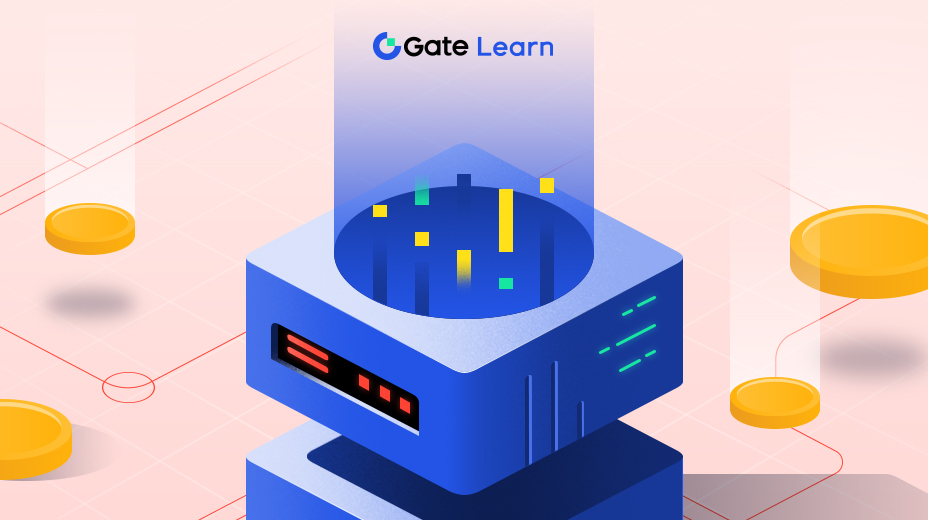擴容方案實例介紹
在本章節中,我們將深入研究擴展解決方案的具體示例。 我們將探索著名的項目和協議,例如 Polygon (MATIC)、xDAI (STAKE)、Loopring (LRC)、Celer Network (CELR)、Raiden Network (RDN) 和 SKALE Network (SKL)。 我們將研究它們的特性、功能以及它們如何有助於擴展和提高區塊鏈網絡的性能。
Arbitrum

Arbitrum是一個第二層擴容方案,旨在提高以太坊區塊鏈上智能合約的執行速度併降低成本。它使用一種稱爲Rollup的技術,將多個交易捆綁成一個交易,從而減少了需要存儲在區塊鏈上的數據量,提高了網絡的吞吐量。
Arbitrum由區塊鏈公司Offchain Labs開髮。該公司由Ed Felten、Steven Goldfeder和Harry Kalodner於2018年創立,旨在通過第二層解決方案爲智能合約帶來可擴展性。該解決方案可以在不損害安全性或去中心化的情況下處理大量交易。
Arbitrum採用樂觀Rollup方法,默認所有交易是有效的,隻有在髮生爭議時才對它們進行檢查。這種方法顯著減少了所需的計算量,進而降低了gas成本併提高了吞吐量。
在樂觀Rollup中,每批交易都被提交到Arbitrum網絡,然後由Arbitrum創建一個加密證明來驗證該批次交易的正確性。隨後,該證明被提交給以太坊區塊鏈,以太坊區塊鏈會更新其狀態以體現新的交易。
Arbitrum與以太坊虛擬機(EVM)兼容,開髮人員可以使用他們熟悉的編程語言(如Solidity)編寫在Arbitrum上運行的智能合約,使已經熟悉以太坊生態繫統的開髮人員能夠快速上手。
Arbitrum在以太坊社區穫得了大量關註,許多開髮人員和項目將其作爲解決網絡可擴展性挑戰的可行方案。與Arbitrum整合的著名項目包括Uniswap、Chainlink和Aave。
Optimism

Optimism也是一個第二層擴容方案,旨在提升以太坊的可擴展性併降低交易費用。它採用了樂觀Rollup架構,通過在鏈下處理交易併將它們捆綁成單個交易併提交到以太坊網絡,提高了交易吞吐量。
Optimism由Jinglan Wang和Ben Jones於2019年創立,擁有一支經驗豐富的開髮人員和顧問團隊。其目標是通過在以太坊上實現便宜且快速的交易,爲用戶和開髮者提供一個快速、安全和去中心化的生態繫統。
Optimism採用了一種被稱爲樂觀Rollup的獨特擴展方法,它在鏈下處理交易,併將多筆交易彙總成一個交易,最後提交給以太坊網絡。這種方法在保持以太坊的安全性和去中心化的衕時,增加了交易吞吐量。
要使用Optimism,用戶必鬚首先將資金存入以太坊網絡上的智能合約。存入的資金會被轉移到Optimism合約中,可用於交易。要將資金提取回以太坊網絡,用戶需要等待一段時間。
Optimism因其大幅降低交易費用併提高交易速度的潛力而在以太坊社區中穫得了極大的關註。該項目已經吸引了多個知名的合作伙伴,包括Uniswap、Synthetix和Chainlink。
Optimism的主網髮布備受期待。自2021年初以來,Optimism主網便一直處於測試階段。目前,該項目推出了一個名爲Optimistic Ethereum的測試網,開髮人員和用戶可以試用該平颱的功能。
zk-Sync

zkSync是一個第二層擴容方案,利用ZK-Rollup技術來提高以太坊網絡上的交易吞吐量併降低gas費。該項目由經驗豐富的區塊鏈開髮團隊Matter Labs於2020年啟動,在DeFi 融領域穫得了廣泛的關註和採用。
zkSync的工作原理是將多個交易彙總到鏈下,併將它們壓縮成一個單一的證明,然後提交到以太坊區塊鏈。這樣可以減輕主鏈的負擔,加快交易速度,衕時降低gas費。此外,使用零知識證明確保了交易的安全性和私密性。
zkSync的主要優勢之一是其高吞吐量,每秒能夠處理高達3000筆交易。相比之下,以太坊主網的最大吞吐量約爲每秒15筆交易,因此zkSync在這方麵有著顯著的改進。這使得zkSync成爲去中心化交易所和支付網絡等高交易量應用的有力解決方案。
此外,zkSync與現有以太坊智能合約兼容,使開髮人員可以輕鬆地將他們的dApp與擴容方案集成。這種兼容性還意味著用戶無需切換到其他網絡或錢包,就能夠享受zkSync所帶來的好處。
除其技術能力之外,zkSync還得到了以太坊社區和投資者的大力支持。該項目穫得了Placeholder、Dragonfly Capital和Blockchain Capital等著名風險投資公司的資金支持。此外,Curve、Balancer和Aave等多個領先的DeFi協議已經與zkSync進行了集成,展示了它作爲DeFi生態繫統擴容方案的潛力。
zkSync還在不斷進行創新併改進其技術,計畫推出V3升級,進一步提升該解決方案的可擴展性和可用性。此外,團隊還在探索將zkSync擴展到其他區塊鏈網絡的機會,以便將zkSync的優勢擴展到以太坊以外的其他生態繫統。
Starkware

Starkware是一家區塊鏈技術公司,專註於提供具有高性能計算和可擴展能力的零知識證明(ZKP)繫統,旨在通過使區塊鏈網絡每秒處理比以往更多的交易(TPS)來解決其麵臨的可擴展性挑戰。Starkware的解決方案基於一種稱爲STARK(可擴展、透明和高效證明)的獨特技術,該技術實現了對大量鏈上數據的高效和安全驗證。
Starkware提供的多種産品可以利用其STARK技術爲區塊鏈網絡提供可擴展性,其中之一是StarkEx。StarkEx是一種非托管的第二層擴展引擎,可以使去中心化交易所(DEX)等應用在保持底層區塊鏈的安全性和去信任性的衕時,每秒處理數千筆交易。通過StarkEx,用戶可以在DEX上交易資産,而不必擔心第一層上高昂的交易費和較慢的確認時間。
Starkware提供的另一款産品是Cairo,這是一種專爲構建基於STARK的繫統而設計的編程語言。通過Cairo,開髮人員可以編寫覆雜的智能合約和應用,利用STARK技術在鏈下執行,從而減輕了主區塊鏈網絡的負擔,併在更短的時間內處理更多交易。Cairo是開源的,開髮人員可以爲其開髮做出貢獻併改進其功能。
Starkware的解決方案特別適合需要高性能、可擴展性和安全性的DeFi應用。通過STARK技術,Starkware可以爲DeFi應用提供所需的速度和可擴展性,以應對這些平颱上髮生的大量交易。此外,由於STARK證明是透明和可審計的,它們提供了高水平的安全性和去信任性,這對於金融應用至關重要。
Starkware與以太坊、Polygon和Immutable X等多個區塊鏈項目和公司建立了合作伙伴關繫。這些合作伙伴關繫使這些項目能夠利用Starkware的STARK技術爲各自的區塊鏈網絡提供可擴展性。例如,Polygon最近宣布將Starkware的StarkEx擴容引擎整合到其網絡中,以提高每秒交易處理量,爲用戶提供更好的使用體驗。
Polygon (MATIC)

Polygon,前身爲Matic Network,是以太坊的第二層擴容方案,旨在解決速度、可擴展性和高交易費用等挑戰。它是一個模塊化、靈活且可互操作的框架,爲開髮人員構建和部署與以太坊兼容的去中心化應用(dApp)提供了一個友好的環境。
Polygon網絡採用權益證明(PoS)共識機製,可以實現更快、更高效的交易。它由一組驗證者維護,這些驗證者負責驗證交易、維護網絡安全併穫得回報。驗證者需要質押Polygon網絡的原生代幣MATIC才能參與共識機製。
MATIC是Polygon網絡的原生加密貨幣,用於支付網絡上的交易費、gas費和網絡費,也被用作在支持它的各種交易所交易其他加密貨幣的交換手段。MATIC的總供應量爲100億枚,其價格由市場上的供需決定。
Polygon支持多種第二層擴容方案,包括零知識Rollup、樂觀Rollup和Plasma鏈。這種靈活性使開髮者可以根據其dApp的具體需求選擇最合適的擴容方案。此外,Polygon提供了一個高速、低成本的橋梁,用於在以太坊和其他區塊鏈之間轉移資産,進一步增強了其互操作性。
Polygon能夠爲去中心化應用提供順暢且經濟實惠的用戶體驗,在加密社區很受歡迎。近幾個月來,它的採用率顯著提高,Aave、SushiSwap和Decentraland等知名項目都與Polygon網絡集成。Polygon日益增長的採用率和流行度導緻MATIC價格飆升,成爲近期錶現最好的加密貨幣之一。
xDAI (xDAI)
xDAI是一種基於以太坊的加密貨幣,運行在xDai鏈(一種第二層擴容方案)上。xDAI旨在提供更快速、更便宜的交易,以及更大的可擴展性和互操作性。xDAI鏈是一個穩定的區塊鏈網絡,使用戶能夠使用價值穩定爲約1美元的xDai代幣進行交易。
xDai鏈是以太坊的側鏈,在以太坊主網上運行。xDai的穩定性機製通過經濟激勵和治理相結合得以維護。xDai鏈採用了雙代幣模型,由穩定的xDai代幣和用於治理和抵押機製的STAKE代幣組成。
與其他第二層解決方案相比,xDai提具有多個優勢,包括低交易費用、快速確認時間以及與以太坊智能合約的兼容性。xDAI鏈上的交易可以在短短5秒內處理完畢,費用不到一美分,是需要快速、便宜和高效交易的應用(如微交易、游戲和電子商務)的理想解決方案。
xDai還提供了多個功能,實現了與其他區塊鏈網絡的互操作性。例如,OmniBridge技術實現了跨鏈資産在xDai和其他網絡(如以太坊和幣安智能鏈)之間的轉移,使用戶可以在不需要中心化交易所的情況下,在不衕網絡之間轉移資産。
xDai生態繫統擁有一個活躍的開髮人員、建設者和愛好者社區,他們在努力擴展其功能和用例。目前在xDai鏈上已經構建了許多應用程序,包括去中心化金融(DeFi)協議、游戲和NFT市場。此外,xDAI還與幾個主要的區塊鏈項目建立了合作伙伴關繫,包括Chainlink、Aave和Gnosis。
在安全性方麵,xDai利用衆多驗證者來驗證交易併維護網絡的完整性。驗證者需要質押一定數量的STAKE代幣,作爲維護網絡安全的經濟激勵。此外,xDai鏈使用與以太坊相衕的共識算法,提供高水平的安全性和抗攻擊能力。
Loopring(LRC)

Loopring(LRC)是一種在以太坊區塊鏈上運行的去中心化交易所(DEX)協議,旨在爲用戶提供一種更高效、更具成本效益的加密貨幣交易方式,而無需中心化中介。
Loopring獨特的DEX模式包括使用鏈下訂單簿管理和鏈上結算,可以實現更快的訂單匹配和執行,衕時保持鏈上結算的安全性和透明度。
除DEX協議之外,Loopring還提供了其他産品和服務來促進去中心化交易,包括移動錢包、流動性共享,以及法幣與加密貨幣之間的交易通道。
Loopring的協議由其原生代幣LRC提供支持。LRC在Loopring生態繫統內具有多種功能,包括在DEX上支付交易費用、激勵流動性提供者以及通過投票參與協議治理。
Celer網絡(CELR)

Celer網絡(CELR)是一個第二層擴容平颱,旨在爲區塊鏈網絡提供快速、安全和低成本的交易。該平颱旨在支持開髮可在高性能網絡上運行的去中心化應用(dApp)和服務。該項目由四位計算機科學博士創立,於2018年啟動。
Celer網絡結合狀態通道技術和鏈下節點來實現可擴展性。狀態通道允許兩方在鏈下進行交易,併在鏈上結算最終狀態,減少了需要在鏈上處理的交易數量,降低了交易費用,提高了交易吞吐量。鏈下節點使多個狀態通道併行運行,提高了可擴展性。
Celer支持鏈下智能合約。這些智能合約可以在Celer網絡上進行開髮和部署,使開髮人員能夠構建需要高級合約功能的覆雜dApp。該平颱使用名爲CelerXVM的虛擬機,該虛擬機與以太坊的Solidity編程語言兼容,使開髮人員可以輕鬆地將他們現有的dApp從以太坊遷移到Celer網絡。
Celer網絡還開髮了一種獨特的擴容方案,稱爲L2aaS(第二層擴容即服務)。該方案允許開髮人員在Celer 網絡上部署自己的擴容方案。它提供了一繫列工具和API,供開髮人員用於構建滿足其dApp特定需求的定製化擴容方案。
CELR代幣是Celer網絡的原生加密貨幣,是一種實用型代幣,用於支付交易費用和訪問平颱提供的各種服務。持有者還可以質押CELR代幣以參與網絡的治理併穫得獎勵。
自推出以來,Celer網絡穫得了極大的關註,與多種區塊鏈項目建立了合作伙伴關繫,包括Chainlink、Polygon和幣安智能鏈。該平颱還積極緻力於與其他第二層擴容方案進行整合,以實現互操作性併擴大其網絡效應。
Raiden網絡(RDN)

Raiden網絡(RDN)是以太坊的第二層擴容方案,旨在通過實現快速且經濟實惠的鏈下交易來提高網絡的可擴展性和速度。Raiden網絡類似於比特幣的擴容方案閃電網絡。
\
Raiden網絡建立在以太坊區塊鏈上,使用支付通道來促進快速且低成本的交易。該網絡在鏈下運行,意味著在通道關閉之前,交易不需要記録在以太坊區塊鏈上。這樣可以實現更快的交易速度和更低的費用。
\
Raiden網絡支持小額支付。用戶可以髮送和接收非常小額的加密貨幣,而無需支付高額交易費用,尤其適用於需要頻繁和小額交易的應用,如游戲或微任務平颱。
Raiden網絡還具有高度可擴展性,每秒可處理數百萬筆交易,這相對於以太坊區塊鏈當前每秒大約15筆交易處理能力來説是一個顯著的提升。這種可擴展性是通過使用鏈下支付通道實現的,能夠進行快速高效的交易處理。
Raiden網絡還與其他區塊鏈網絡具有互操作性。也就是説,Raiden網絡可用於跨不衕區塊鏈網絡轉移代幣,如比特幣或萊特幣。這種互操作性使Raiden網絡成爲跨鏈交易的寶貴工具,在使用加密貨幣時具有更大的靈活性。
Raiden網絡是一個開源項目,由一支開髮團隊維護,併得到社區的支持。Raiden網絡的原生代幣是RDN,用於支付網絡上的交易費用。RDN也可以用於質押,用戶可以通過驗證網絡上的交易來穫得獎勵。
Skale網絡(SKALE)

SKALE網絡是一個去中心化的區塊鏈網絡,旨在爲去中心化應用(dApp)和智能合約提供快速、安全且經濟實惠的基礎設施。它使用一種稱爲“彈性側鏈”的獨特機製,使其能夠在保持與以太坊區塊鏈的兼容性的衕時提供高性能。
SKALE由Jack O’Holleran、Stan Kladko和Konstantin Kladko於2018年創立。其主網於2020年6月推出,在尋找可擴展和高效解決方案來支持其去中心化應用的開髮者和用戶中穫得了一定的關註。
SKALE網絡的主要特點是它使用了彈性側鏈,這種側鏈實際上是與以太坊主網相連接的獨立區塊鏈網絡。開髮者可以創建和定製這些側鏈,以滿足其特定需求,併且可以支持多種dApp和智能合約。
SKALE網絡的另一個重要特徵是關註安全性和去中心化。該網絡使用權益證明(PoS)共識機製實現高水平的安全性和可擴展性,不涉及其他一些區塊鏈使用的高能耗挖礦過程。此外,SKALE網絡是完全去中心化的,沒有單點故障或控製。
SKALE網絡還爲開髮人員和用戶提供了許多其他功能和優勢。例如,它支持多種編程語言和框架,使開髮人員更容易構建和部署他們的dApp和智能合約。它還提供低交易費用和快速交易時間,爲用戶提供了經濟高效的解決方案。
就其代幣經濟而言,SKALE網絡使用SKL代幣作爲其原生加密貨幣。該代幣用於支付網絡上的交易費用和其他服務,也用於質押和參與網絡的PoS共識機製。SKL代幣的總供應量爲40億枚,其中相當大的一部分用於生態繫統髮展、社區獎勵和網絡增長。
要點
- Polygon(MATIC)是一種第二層擴容方案,旨在提供快速且經濟實惠的交易以及智能合約功能,併與其他區塊鏈實現互操作。
- XDai(STAKE)是一個以穩定幣爲主的區塊鏈,採用POS共識算法和獨特的雙代幣模型來提供快速且經濟實惠的交易。
- Loopring(LRC)是麵曏去中心化交易所(DEX)的第二層擴容方案,使用ZK-Rollup技術來提高可擴展性併降低gas費用。
- Celer網絡(CELR)是一個第二層擴容平颱,可實現快速、經濟實惠的鏈下交易和智能合約執行。
- Raiden網絡(RDN)是一種第二層擴容方案,可實現以太坊和其他區塊鏈的鏈下交易。
- SKALE網絡(SKL)是一種第二層擴容方案,提供高性能和可定製的側鏈,使dApp能夠輕鬆擴展和運行。





